7 plants never to grow next to fruit trees – avoid these potentially destructive pairings if you want bumper crops
Expert advice to encourage a healthy harvest
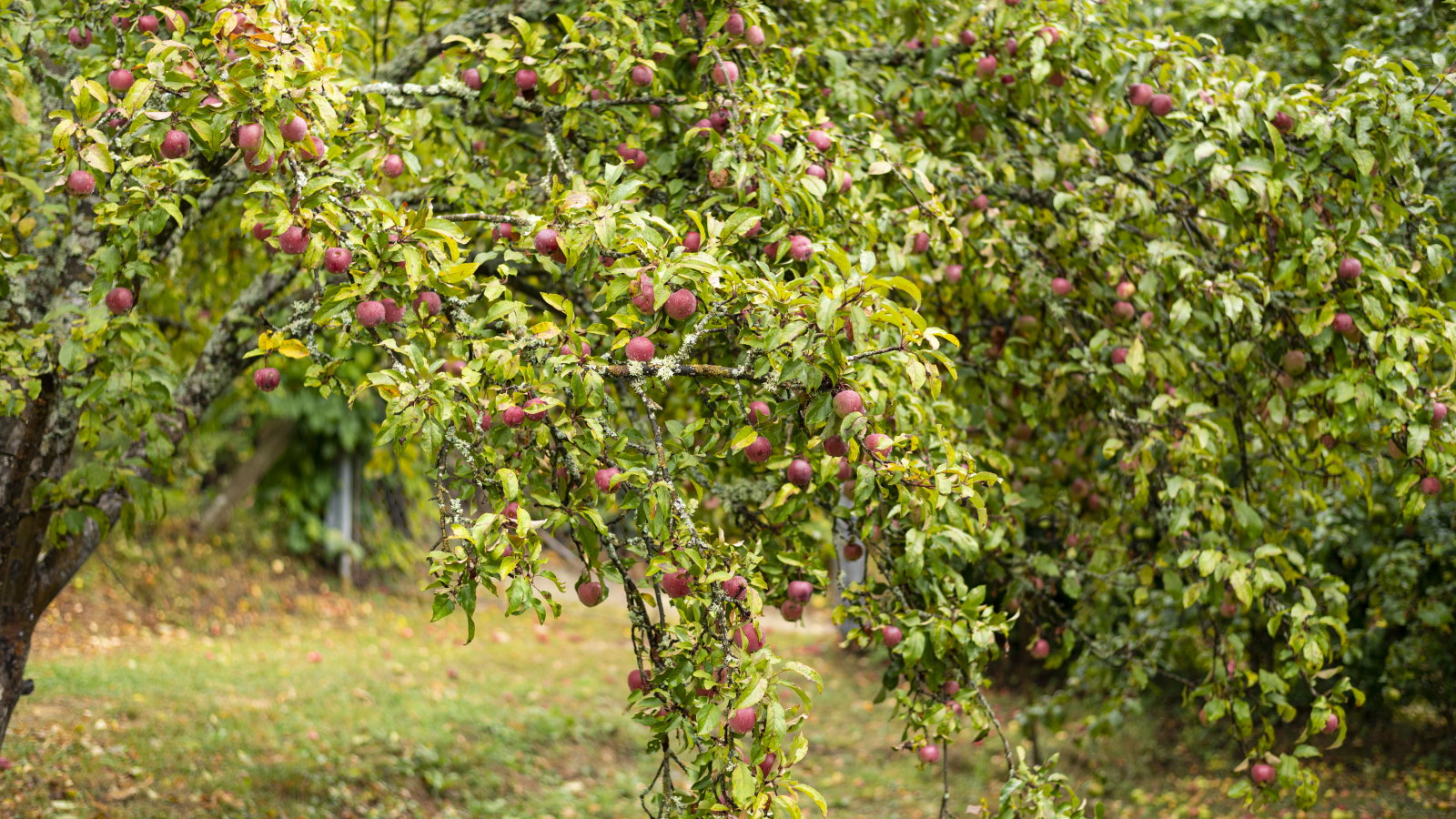
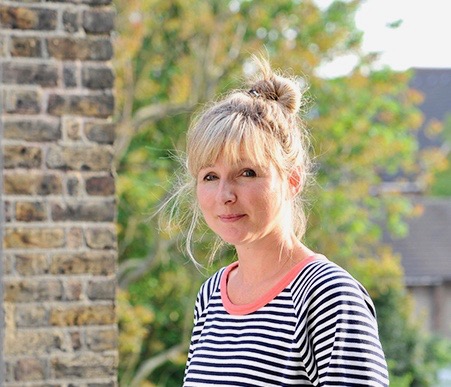
A garden with fruit trees is a delight for many, especially when filled with their beautiful bounty. The joy of picking an apple, pear or plum straight from a tree is good for the soul in our fast-paced world. So it's disappointing when a much anticipated harvest is not forthcoming.
There are various reasons for a poor fruit crop - and often it's due to the weather. However, one of the lesser known reasons is companion planting mistakes. This is because there are a number of incompatible plants never to grow next to fruit trees. These plants should be kept away to mitigate reduced yields
Gardening is often more science than art, and many plants and trees release powerful compounds into the soil, while others compete for available nutrients. We've outlined which of these plants are more foe than friend to your fruit trees, so you can keep them apart and enjoy healthy harvests.
7 plants never to grow next to fruit trees
'Planting the wrong companions near fruit trees can hinder growth, reduce yields, and sometimes even harm the tree or the plant itself,' says Robin Phelps, gardening and preserving coach and founder, Sow Many Plants.
'Some fruit trees are more sensitive to companion planting than others due to their shallow root systems, susceptibility to disease, or specific nutrient requirements. Members of the Rosaceae family (which includes apples, pears, plums, cherries, and peaches) tend to be more sensitive to nearby competition.'

Robin Phelps is a Gardening and Preserving Coach, with a passion for nurturing green spaces and preserving the bounties of nature. With over 20 years of experience in gardening, Robin began her journey in a small apartment with a balcony and has since expanded to growing on 3 acres. She has evolved into an expert gardener and is eager to guide others on their gardening journey.
1. Walnut trees (Juglans spp.)
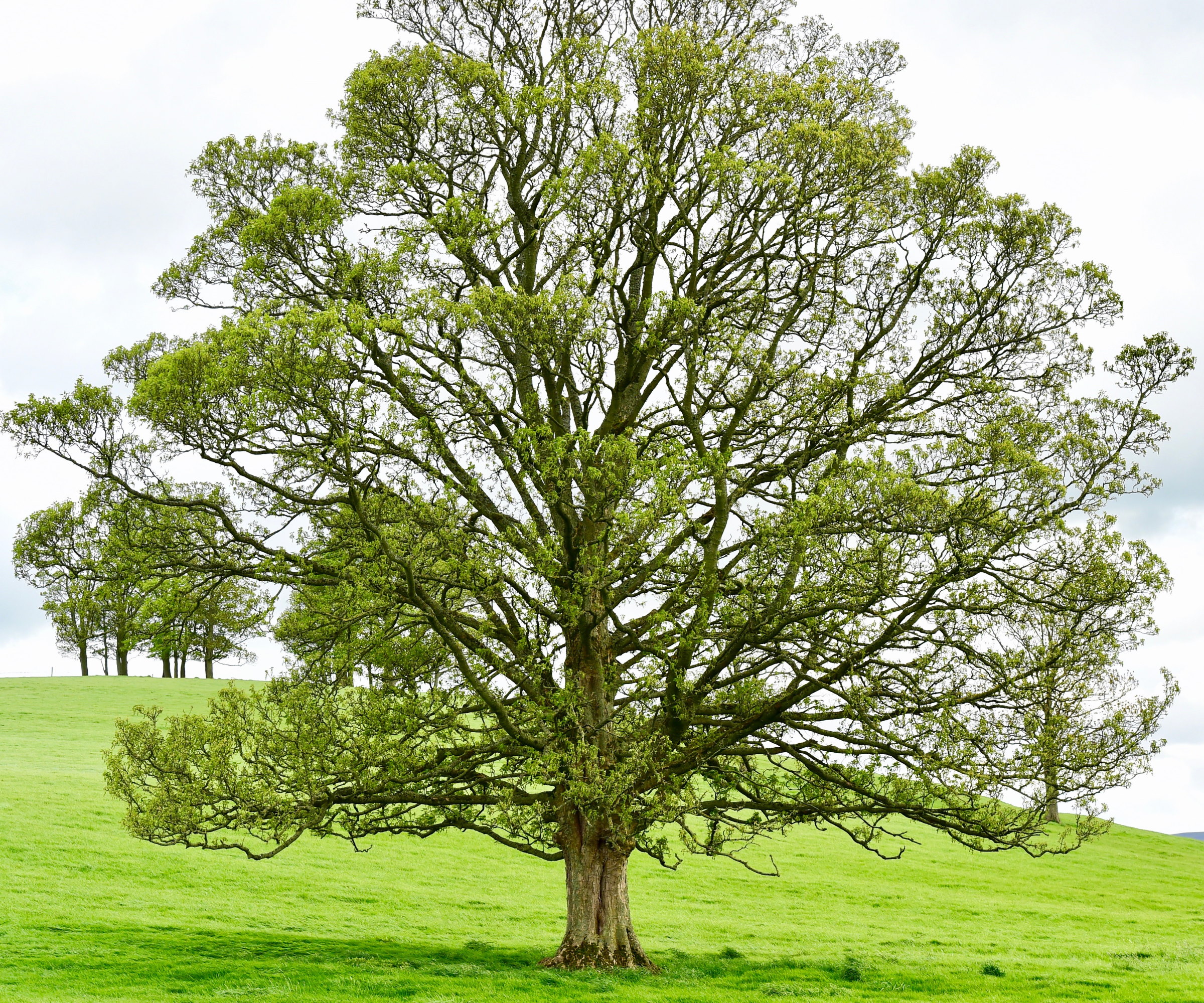
Revered by the Romans, these mighty broadleaf trees are loved for the nuts they produce and for their timber, but don't plant a walnut tree near an orchard of pome or stone fruits, such as apple, pear, peaches or plum. The fruits might work well with walnuts in cakes and puddings, but they should be kept apart outside in your yard.
'Keep walnut trees at least 50 feet away, but ideally over 100 feet if space allows from apple, pear, peach, plum and cherry trees,' says Robin. 'Walnut trees, particularly black walnut (Juglans nigra), produce a chemical called juglone, which is toxic to many plants. Juglone is released through the roots, leaves, and nut husks, and it inhibits the growth of susceptible plants.
'Apple and pear trees are highly sensitive to juglone and may experience stunted growth, yellowing leaves, and even dieback if planted too close. For the fruit trees' benefit, maintaining a wide buffer zone around walnut trees prevents juglone toxicity.'
This Granny Smith apple tree from Fast-Growing Trees will grow in zones 5-8 and the larger sized trees can produce the tart flavored fruit in the first year.
2. Fennel (Foeniculum vulgare)
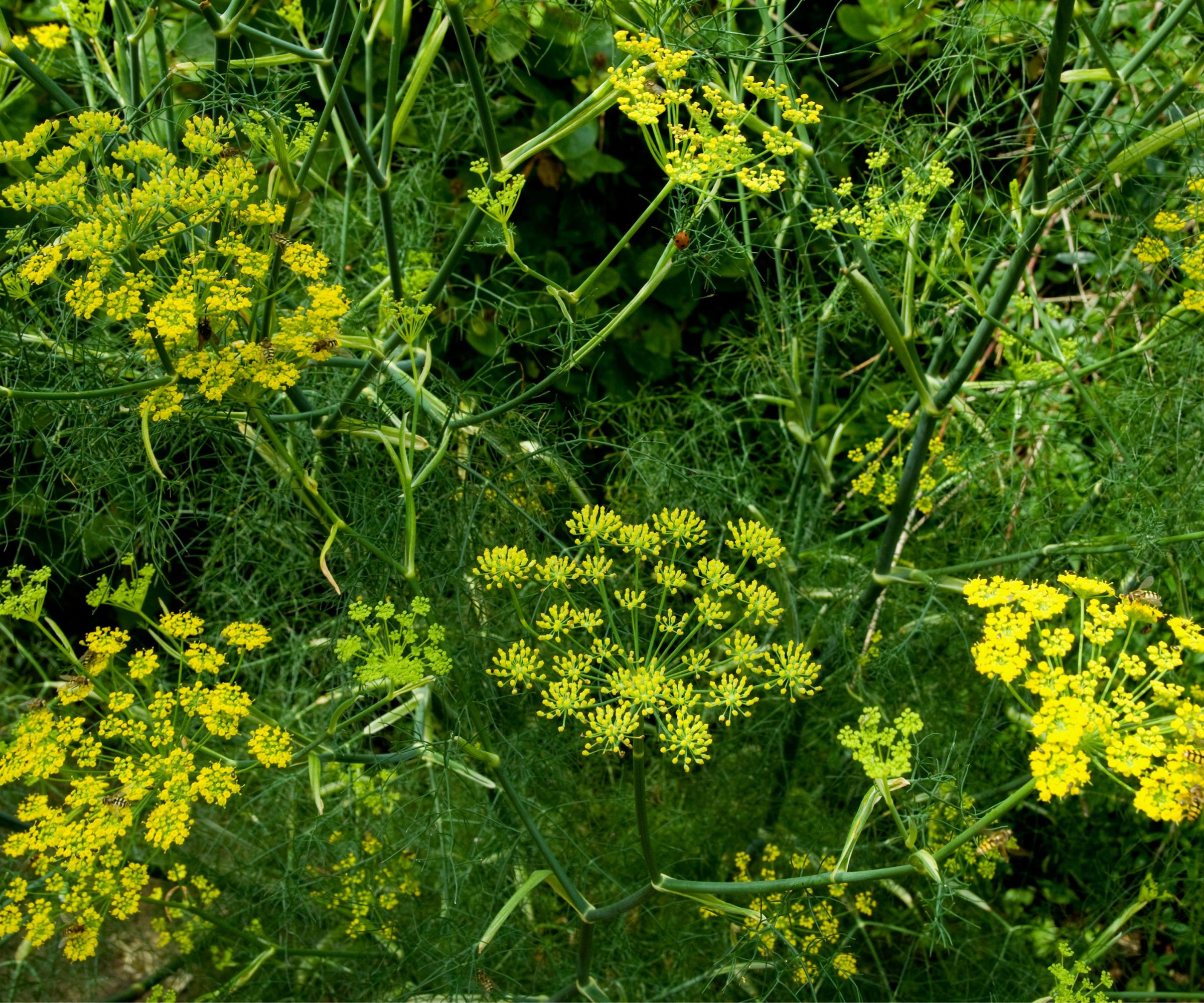
Fennel has many wonderful culinary and medicinal uses, and with its pretty yellow umbels it's a charming addition to flower beds. Yet, there are numerous plants never to grow close to fennel and fruit trees are another to add to the list, especially citrus and stone fruits. Although, in this case a distance of 10-12 feet should be sufficient to prevent problems.
'Fennel is known to be allelopathic, meaning it releases chemicals that can inhibit the growth of neighboring plants,' says Robin. 'It competes for nutrients and moisture, which can weaken young or established fruit trees.
'Citrus trees and stone fruits (like peaches and plums) are particularly sensitive to this competition. It’s best to plant fennel in its own space, away from fruit trees, to protect both the tree and the fennel from reduced yields.'
The Reliance peach tree from Fast-Growing Trees is one of the cold hardiest around and will bear fruit in zones 4-8.
3. Brassicas (Broccoli, Cabbage, Cauliflower, etc)
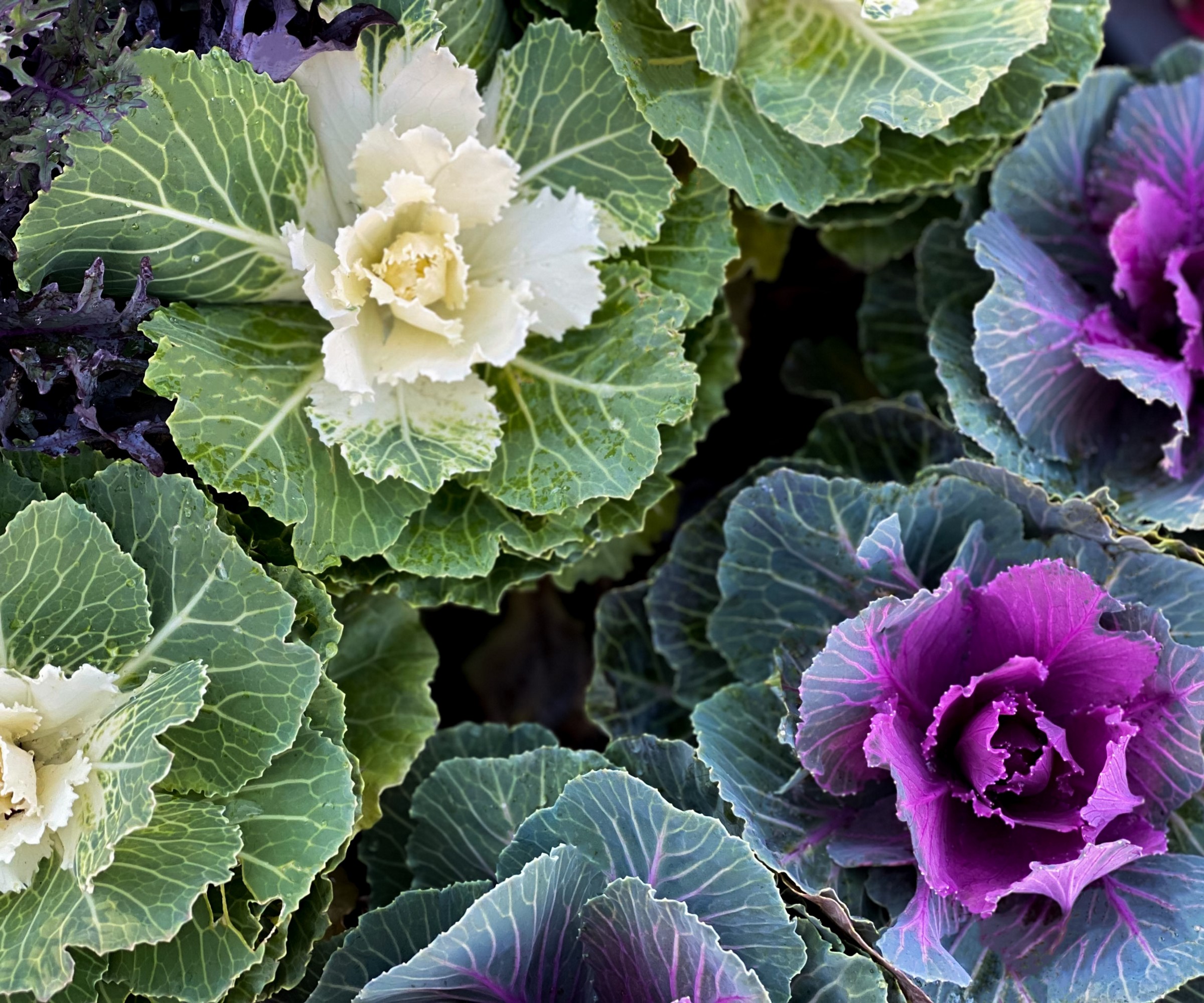
As mentioned before, it's not just the chemicals that some plants release into the soil that can pose problems to fruit trees. Competition for the nutrients they want to take up can cause issues too. This is why it's best to plant brassicas, such as broccoli, cabbage and cauliflower, away from apple, pear and cherry trees.
'Brassicas are heavy feeders and deplete the soil of essential nutrients that fruit trees also rely on, such as nitrogen and potassium,' explains Robin. 'They can also attract pests like aphids and cabbage worms, which may also threaten the nearby fruit trees.
'Planting brassicas near fruit trees creates unnecessary competition for resources and may weaken both the trees and the vegetables. Ensure they are at least 4–6 feet away from each other, and ideally further for larger trees.'
Similar to broccolini, these organic Broccoli seeds - Spring Rapini from True Leaf Market are ready to harvest in 40-60 days. Just sow them away from your fruit trees.
4. Tomatoes, egg plants and cucumbers
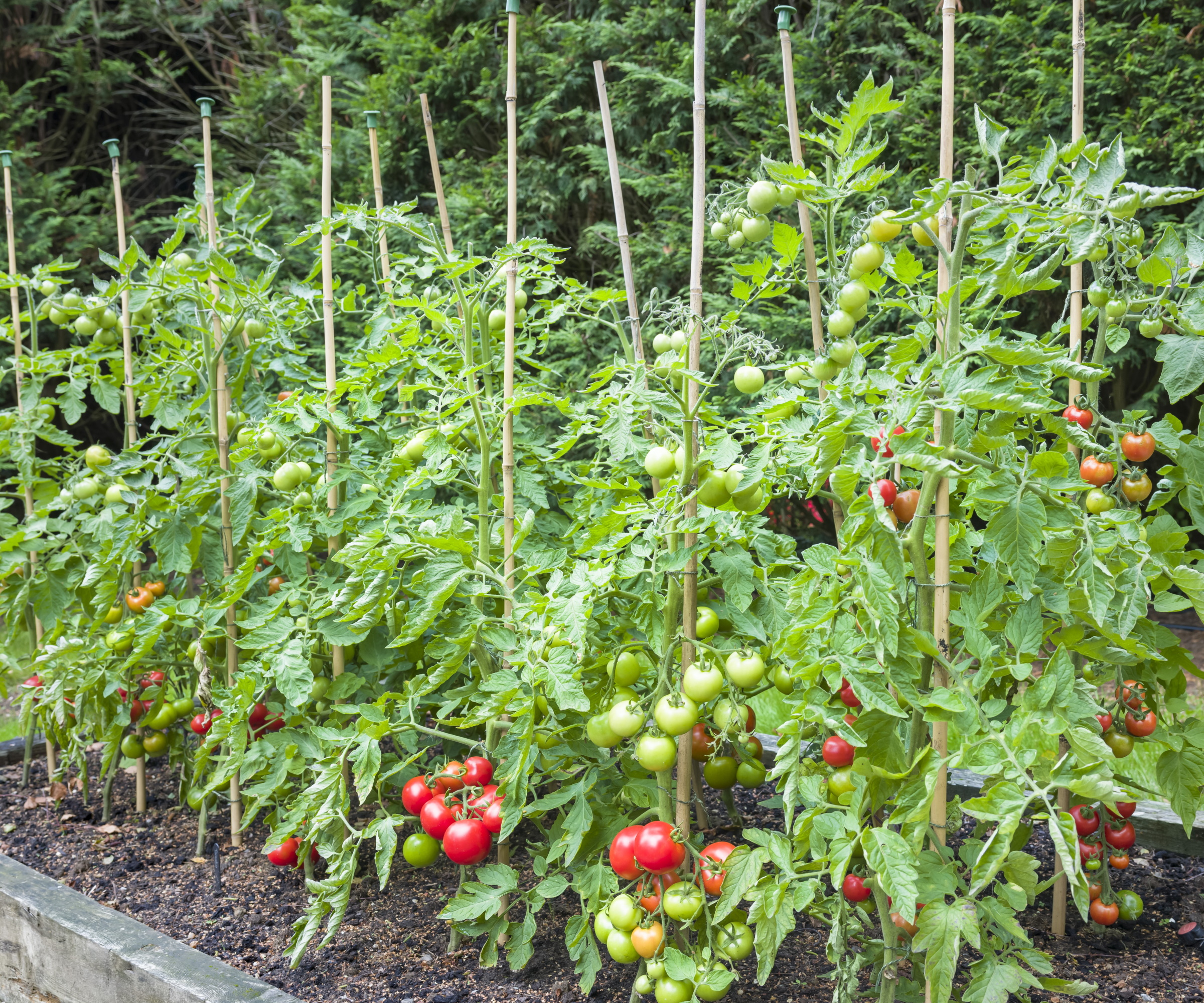
Most people tend to have a specific section in the backyard for a kitchen garden, so for reasons such as ease of watering, it can be tempting to plant crops close together. However, if you intend growing tomatoes, egg plant, cucumbers, melons or squash, make sure they are planted in a separate area to your fruit trees.
'Both tomatoes and fruit trees are prone to blight, so keeping them near each other can build up too much disease in the area, damaging both plants,' explains Christen Waddell, Farmstead Manager, Blackberry Farm.
'This particularly applies to apple trees and pear trees. Blight is a disease spread by fungal spores (or bacteria) and can be carried from the tomatoes to the trees, or vice versa, by wind, animals, and water, especially if blighted material is not removed from the plants immediately.'
Nicole Johnsey Burke, garden designer and founder, Gardenary Inc agrees. 'Nightshades (like tomatoes and eggplants) can host fungal diseases that affect fruit trees,' she says. 'It's also best to avoid planting plants that are heavy feeders, like tomatoes or plants in the cucurbit family.
'This is especially true for stone fruits that have shallow roots at the start of their growth and they don’t tolerate competition well. Citrus fruit trees also need consistent water and feeding. Figs also won’t do well with competition because of their fast growth.'
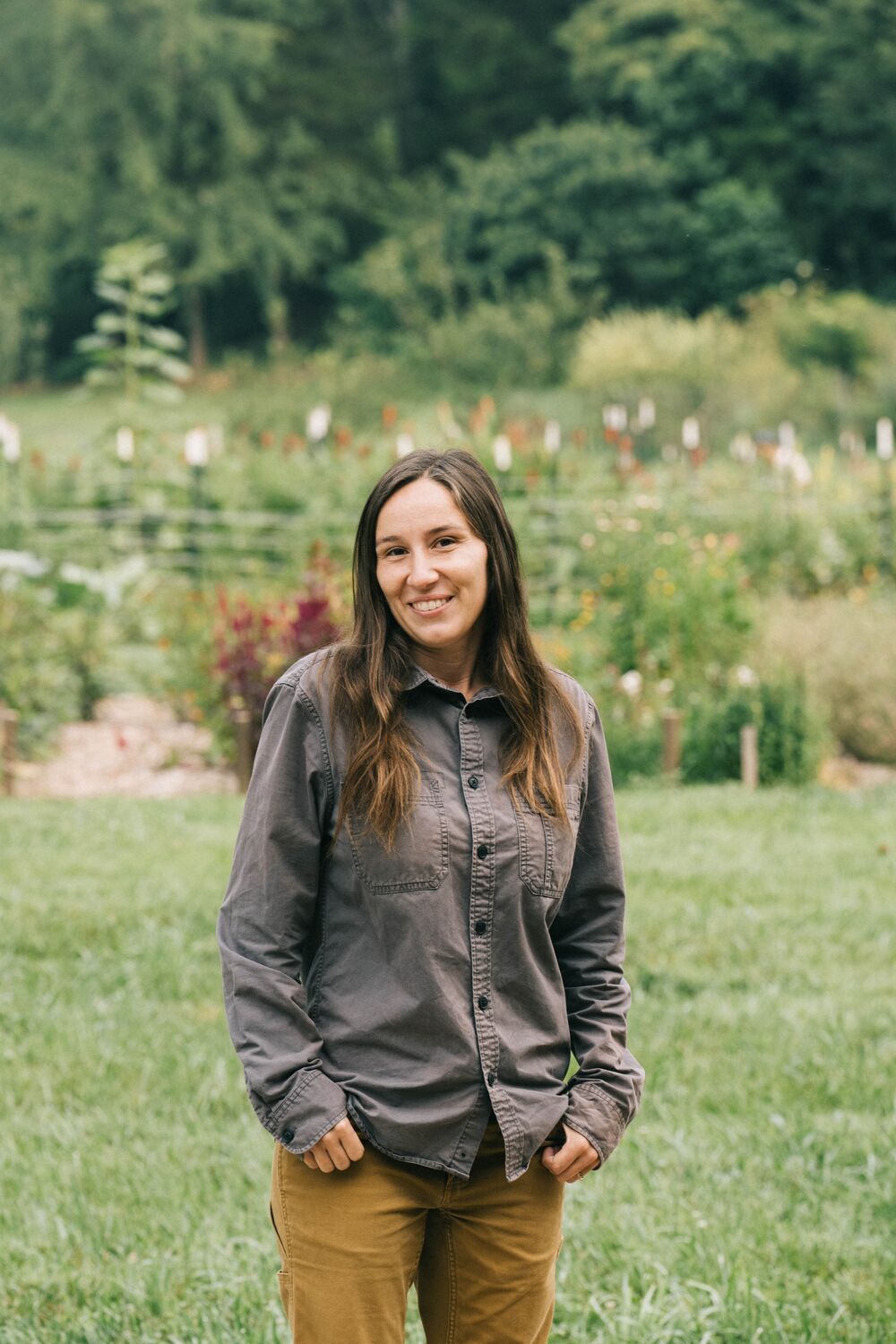
Christen Waddell is the Farmstead Director at Blackberry Farm, Tennessee, where she oversees the garden, dairy and larder at the renowned wine, food and wellness destination. Christen joined the team over ten years ago and has a master’s in biology from Miami University, where she studied agricultural and wildlife systems abroad, focusing her studies and thesis on sustainable agriculture.
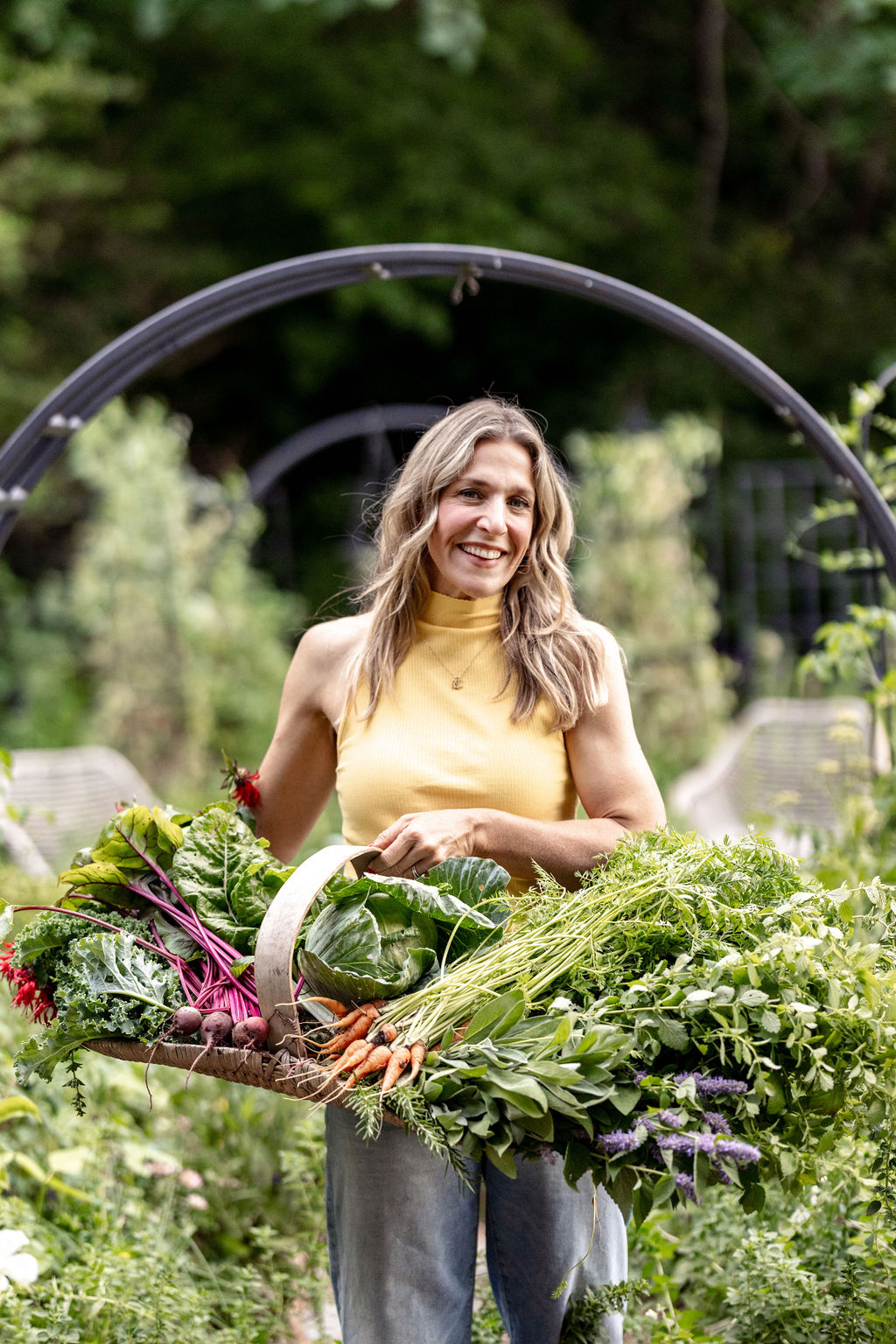
Nicole Johnsey Burke is the entrepreneur and garden designer behind Gardenary Inc, where she leads the garden consultant training programme. She is also the author of The Five Minute Gardener, Leaves Roots, and Fruit, and Kitchen Garden Revival.
5. Mint, oregano and other spreading herbs
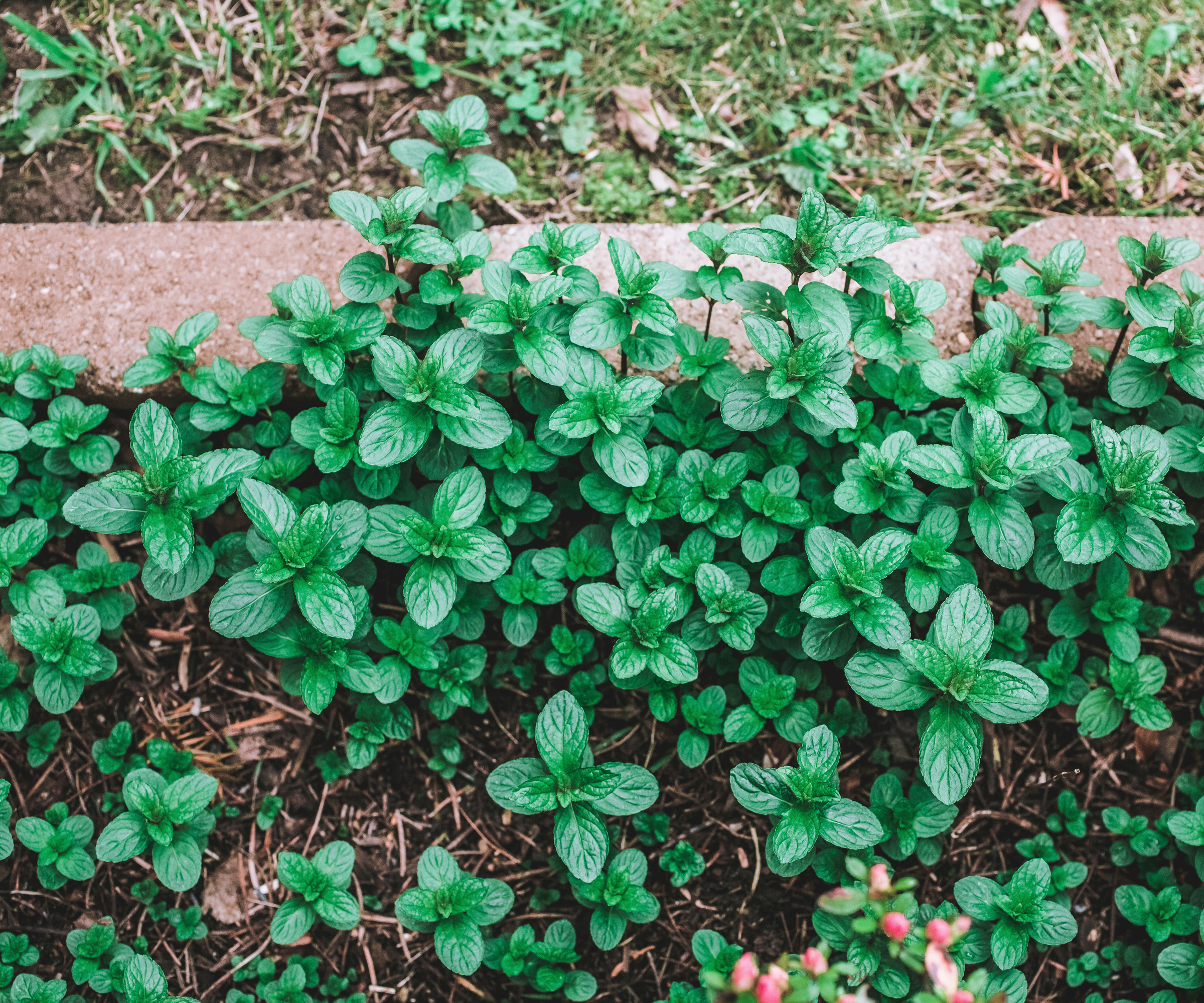
Spreading herbs should also be grown away from fruit trees, particularly those with a tendency to take over, such as mint, as this leads to competition for resources.
'Don’t plant invasive or spreading plants that might compete with the root space of fruit trees, especially trees with shallow root systems,' says Nicole. 'This includes mint, oregano and lemon balm.
'Invasive, non-edibles such as English ivy, and Bermuda grass should also be avoided under fruit trees. Young and dwarf trees are the most susceptible to these and citrus trees are affected as well.'
6. Sunflowers
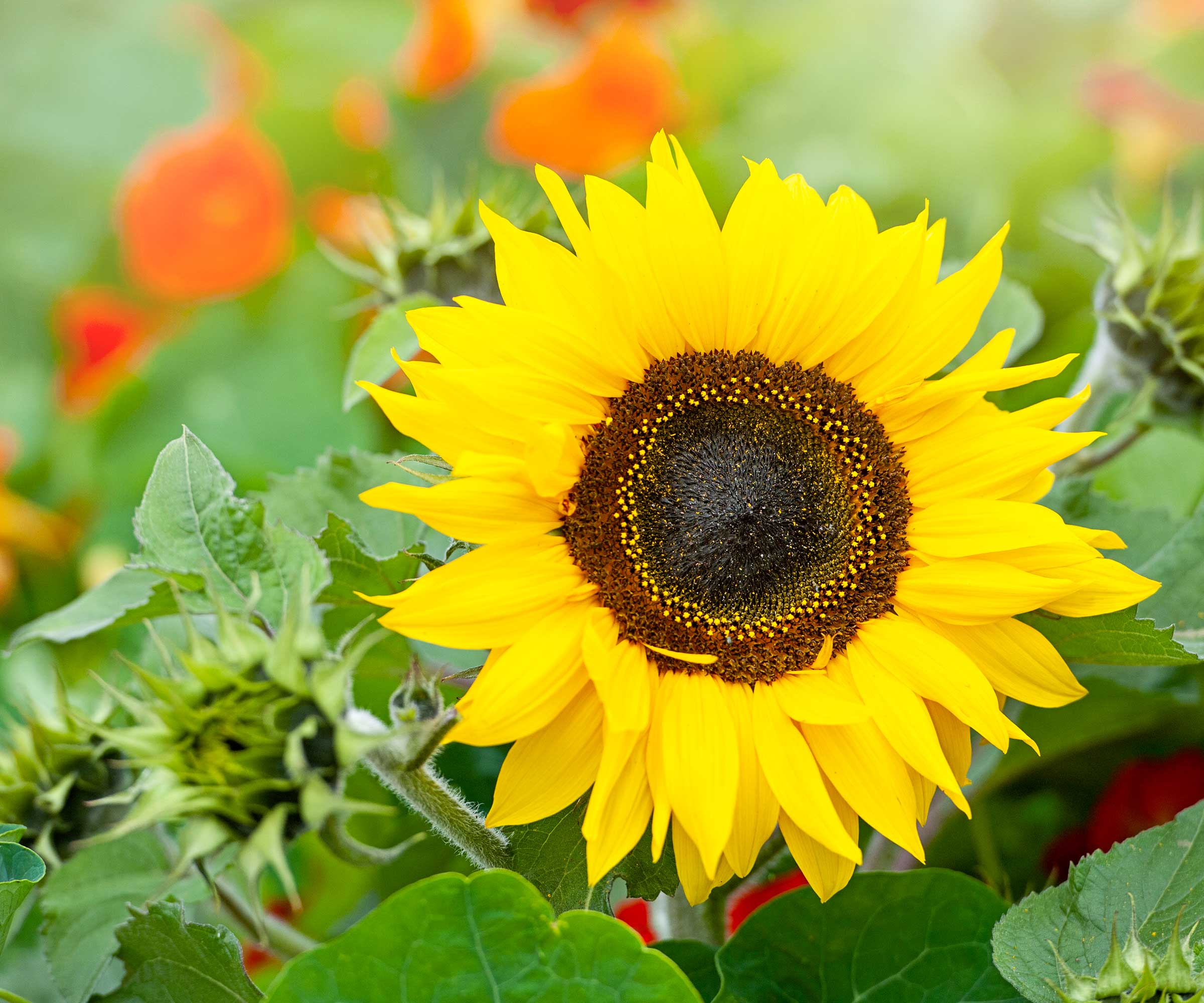
It's not just the edible crops mentioned above that should be planted away from your fruit trees. Some ornamentals, such as sunflowers, are not good companions for fruit trees either. This is because of the chemical compounds they release into the soil.
'Sunflowers, in addition to some other plants like walnut trees and cereal rye grass, produce allelopathic chemicals that stunt the growth of plants around them,' explains Christen.
'While keeping a 3-foot distance between the sunflowers and fruit trees to minimize these effects may be relatively easy to manage, keep in mind that the allelopathic chemicals can remain in the soil even after the sunflowers have been removed.
'Fruit trees tend to be sensitive to environmental factors, especially as they are getting established, so it’s safest to just avoid planting sunflowers near fruit trees. Additionally, some varieties of sunflowers can grow quite tall and reduce the amount of light or even airflow to the fruit tree.'
7. Potatoes

Whilst many of the plants mentioned are not good companion plants for fruit trees due competition for nutrients, pest problems or harmful compounds, there are practical reasons too. The soil around fruit trees is best left undisturbed, so root crops are not a good idea if planted too close to your fruit trees either.
'Potatoes should never be grown next to fruit trees,' says Christen. 'Fruit trees have delicate, often shallow, root systems that can be heavily damaged by soil disturbances, like digging up potatoes to harvest them. This applies to all root crops that you plan to harvest, and will affect younger trees more severely.'
Depending on the size of your kitchen garden, the best scenario is to plant your vegetable and salad crops at a sufficient distance from your fruit trees. Knowing which plant combinations are best avoided will help you to achieve bumper harvests, whatever types of fruit you are growing.
Sign up to the Homes & Gardens newsletter
Design expertise in your inbox – from inspiring decorating ideas and beautiful celebrity homes to practical gardening advice and shopping round-ups.
Jacky Parker is a freelance lifestyle journalist and writer, producing a wide range of features for magazines and websites. She has written for Homes & Gardens and its sister titles, Livingetc and Country Homes & Interiors for more than 15 years, both as a freelance contributor and staff member, regularly reporting on the latest interiors, gardens and lifestyle inspiration, speaking to experts in their respective fields and discovering the newest tips.
You must confirm your public display name before commenting
Please logout and then login again, you will then be prompted to enter your display name.
-
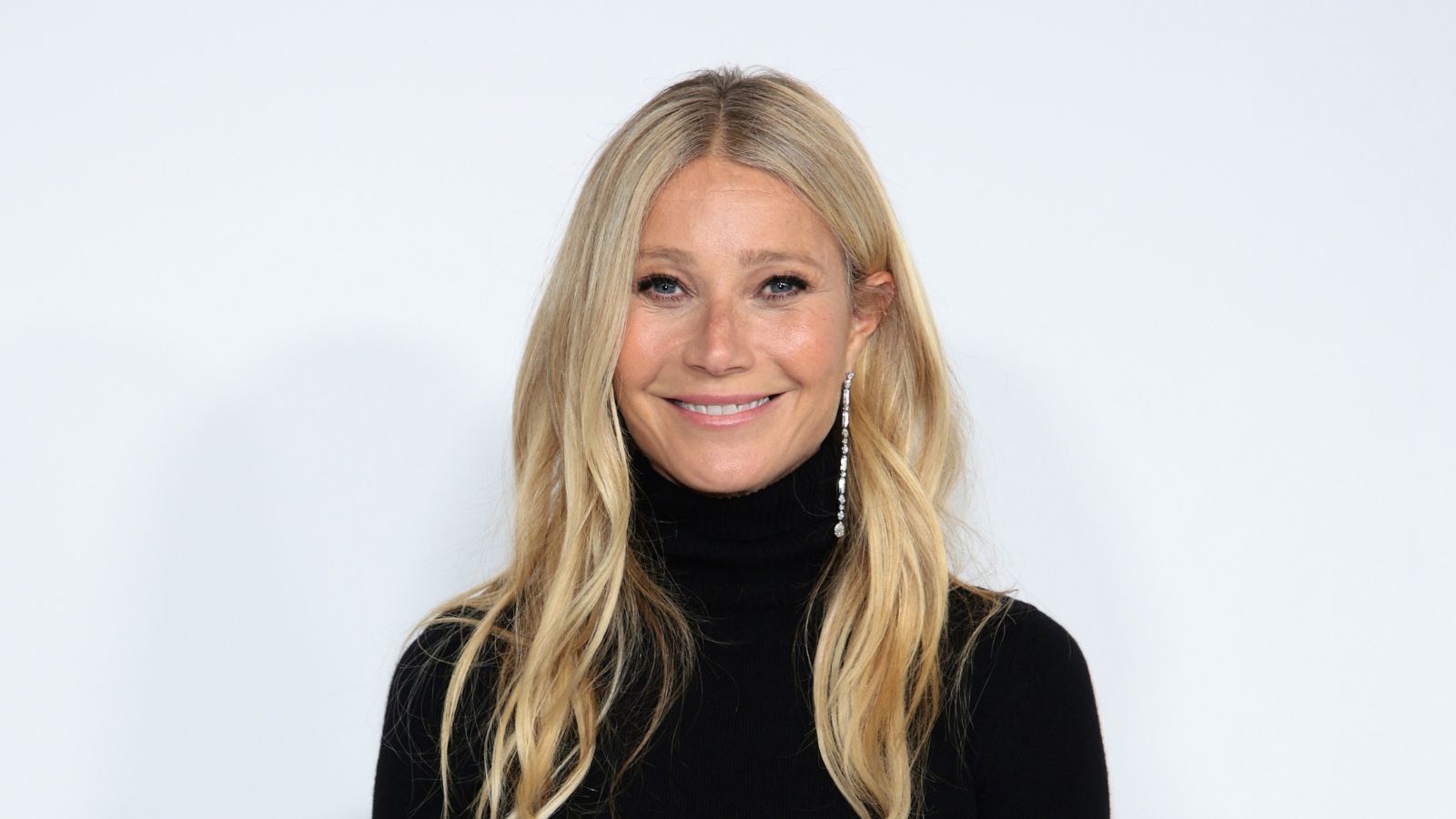 Gwyneth Paltrow's quiet luxury kitchen is so beautiful, we almost overlooked her ultra-smart cabinets – they make the use of 'every inch' of storage space
Gwyneth Paltrow's quiet luxury kitchen is so beautiful, we almost overlooked her ultra-smart cabinets – they make the use of 'every inch' of storage spaceThe Goop founder makes use of dead space in her kitchen with customized cabinetry that reaches to the ceiling, providing ample storage
By Hannah Ziegler Published
-
 Martha Stewart's intelligent cabinets 'take every inch into consideration' – their 'visually light' style will solve your small kitchen storage problems
Martha Stewart's intelligent cabinets 'take every inch into consideration' – their 'visually light' style will solve your small kitchen storage problems'Every kitchen can be beautiful and functional, no matter what the size': 9 years since sharing her clever storage, Martha's cabinets are just as beautiful
By Megan Slack Published